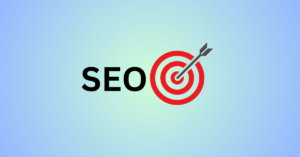Performance marketing is one of the most effective ways in which the modern enterprise can grow or scale, most especially in the quick-changing digital world of today. Just by name, performance marketing means that the advertiser only pays when specific actions – clicks, sales, leads, among others – are achieved. Thus, it is rather different from the traditional marketing approach, where the success of the campaigns is not always directly related to measurable results.
In this blog, we will dive into the basics of performance marketing, what channels it consists of, why it is crucial for businesses, and how it can change companies’ approaches to their advertising strategies
What is Performance Marketing?: Performance marketing is an overarching term referring to various forms of online ads under which the paying entity demands only measurable outcomes. These outcomes may range from clicks, impressions, app downloads, video views, all the way to full purchases. The focus is on measuring and refining campaigns for optimal ROI while simultaneously minimising the risks involved.
The Main Performance Marketing Channels-
Under performance marketing, there are many channels through which brands can focus on a desired objective and audience. Some of them include,
1. Pay-Per-Click (PPC):
The most commonly used channel in performance marketing is probably paid search, or PPC. In this, the advertiser competes for keywords and pays every time a user clicks on an ad. Companies like Google Ads and Bing Ads are leaders in this space, allowing businesses to tap into user interest when searching for relevant products or services. PPC can generate instant traffic to the website and is highly measurable: a favourite of performance marketing strategies.
2. Social Media Promotions:
Platforms include Facebook, Instagram, LinkedIn, and Twitter, among others, that have long been mature as strong performance marketing channels. The cost is kept minimal through the targeting of certain demographics of users or behaviours and interests because ads are paid only at the time that users of the ad interact with them. This level of targeting also helps make its way into niche markets and drives the right kind of traffic to websites, products, or services. Social media advertising also commonly incorporates visual appeal and direct-response formats that reflect better engagement rates.
3. Affiliate Marketing:
Affiliate marketing is where third-party publishers in advertising, marketing, or communications support an end company’s product or service and get a commission for every conversion that happens. This is definitely one of the most cost-efficient channels because businesses pay affiliates only on conversion, usually when a sale happens. It has been adopted widely in industries like retail, e-commerce, and travel; thus, it will make a perfect fit for companies seeking to reach wider audiences without initial investment costs.
4. Display Advertising:
Graphic display ads are shown on third-party sites-those with banner ads. They operate on a CPC click charges or CPM impressions charge model. Highly visual, they aid in creating brand recognition, retargeting users who could have visited the site of the advertiser previously. They can facilitate many overall business goals, such as the recall of the brand name or lead generation, which other performance marketing strategies can support.
5. Native Advertising:
Native ads are implanted or integrated into the look and feel of the platform they appear on, meshing in with the content. This means that these non-disruptive ads are most likely to get higher engagement rates. Native ads can be found on social media, news websites, and content platforms. Brands increasingly prefer native ads for attracting quality leads and enhancing user experience.
Why Performance Marketing is Crucial to Business Growth-
1. Data-Driven Approach:
Performance marketing predominantly focuses on its data-driven outlook. This means campaign performance can be measured in every stage of engagement, starting with the click itself right up to conversion. Using real-time data, advertisers are provided with a considerable ability to improvise over and above strategic optimization and budget allocation. To illustrate, a Facebook ad that is underperforming could be tweaked instantly to the targeting, creative, or copy.
2. Cost-Effectiveness:
Performance marketing model diminishes the wastage of a sizable amount in advertisement as businesses only pay for results sought after when using traditional marketing models, where advertisements must be prepaid. It allows a higher return on investment. Hence, small businesses can make the most of this model as they do not have to commit large budgets; instead, they can scale up their advertising efforts in lieu of the results.
3. High Return on Investment:
Since performance marketing is result-driven, businesses tend to have a higher ROI in comparison with other means of marketing. Advanced targeting, real-time tracking, and the ease with which one can optimise for fast outcomes allow fine-tuning of campaigns toward desired returns. Performance marketing platforms also provide complex analytics, enabling brands to know their audience better and change strategies for improved performance.
4. Scalability:
Another benefit of performance marketing is that it is scalable in nature. Brands can start small, test out various strategies, and then expand the budget as they find what’s best for them. This will give businesses the flexibility to scale campaigns in line with growth and revenue targets while adjusting marketing spend.
Performance marketing doesn’t just bring in immediate results. Rather it facilitates long-term relationships with the customer. Through targeting, remarketing, and engaging ad formats, a brand can hold onto users at different points of the buyer’s journey and nurture them into loyal customers.
How to Get Started with Performance Marketing-
Actually, performance marketing demands a strategically approached strategy. Here are some steps that guide businesses:
1. Define Your Objectives: Identify the exact call to action that you wish to prompt customers to take. Is it lead generation, increased sales, or branding awareness?
2. Select Right Channels : Select the right channels for your performance marketing activities based on your objectives. For example, if you want to push sales that can be completed in real-time, then PPC or affiliate marketing will work better.
3. Set Budget: Define your budget according to scale with your campaign. Start small, test, and then scale up gradually.
4. Monitor and Optimise: Use analytics and tracking tools to measure success with campaigns. Continue optimising for better returns by adjusting bids, targeting, and creatives.
5. Partner Experts: Find a performance marketing agency or people specialised in optimising campaigns for maximum returns




